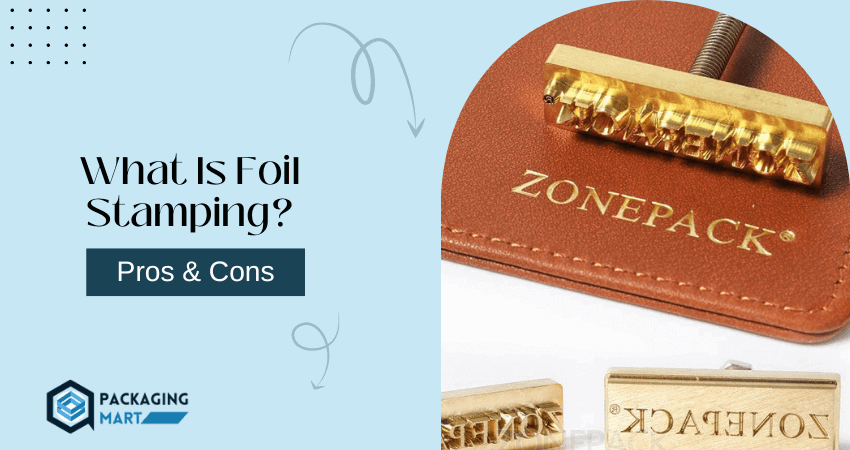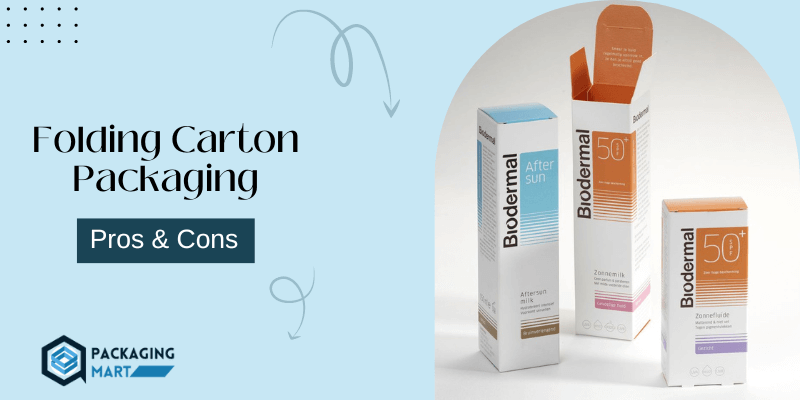Have you ever been curious about foil stamping? Have you ever wondered how shiny foils adorn packaging and printing with textural detail, color and shine? Foil stamping has become increasingly popular for adding interesting visual details to products. It’s also a great way to customize any project and make it unique.
In this blog post, we’ll explore what hot foil printing as well how it works in both traditional printing and modern packaging applications. Read on to learn more!
Foil Stamping & Its Uses
Foil stamping is a printing technique in which heat is used to transfer metallic foil onto the surface of a substrate, typically paper or cardstock. The result creates a shiny and reflective effect that gives printed materials an elegant and luxurious look.
Foil stamping can be used to print logos, product names, decorative designs or any other special information onto the substrate. It is often used in product packaging, coin and currency manufacturing, book cover printing and other types of printed materials.
Foil stamping is a popular choice for high-end products because it offers a unique aesthetic that stands out from other printing techniques. It can also be combined with embossing to create a 3D effect that adds an even more impressive touch to printed materials.
In addition, foil stamping can be done on many types of substrates and is highly resistant to scratches and fading. This makes it great for items that need to have clear and long-lasting branding or special information printed on them.
Advantages Of Using Hot Foil Stamping
- Increased Durability: Hot foil stamping offers long-lasting results, allowing you to enjoy your printed and packaged materials for years without the risk of fading or deterioration.
- Quality Results: Foil stamping produces high-quality finishes that give a vibrant and luxurious look to any packaging design. The result is a professional, polished package that will stand out from others on the market.
- Versatile Design Options: Foil stamping can be used to create a wide range of effects and finishes with different materials, textures, sizes and patterns. This gives you more options for customizing your packaging design to suit any need or preference.
- Cost-Effective: Hot foil stamping is an affordable solution for customizing printing and packaging jobs. It is a cost-effective way to elevate your design without breaking the bank.
- Environmentally Friendly: Hot foil stamping does not require the use of inks or other chemicals, making it a great choice for eco-friendly packaging solutions. It also uses minimal energy and produces less waste, helping you reduce your environmental footprint.
- Fast Turnaround: Hot foil stamping is a fast and efficient process, so you can enjoy quick results without sacrificing quality. This makes it an ideal choice for tight timelines or urgent projects.
- Easy to Use: Hot foil stamping is a straightforward process that requires minimal effort. This makes it easy to use for anyone, even those with limited printing experience.
- Customizable: Hot foil stamping allows you to create completely custom designs and finishes. You can incorporate logos, text, images or other elements into your packaging design to create unique and eye-catching pieces that stand out from the competition.
These are just some of the advantages of using hot foil stamping for printing and packaging projects. With its high-quality results, versatility, affordability and eco-friendly benefits, hot foil stamping is an ideal choice for any business looking to elevate its printed or packaged materials.
Disadvantages of Using Hot Foil Stamping
Not adhere strongly
One of the most common problems with foil stamping is that the adhesive on the back of the foil may not adhere strongly enough to the substrate, leading to premature cracking or peeling.
To avoid this issue, make sure to use a strong enough adhesive and apply pressure evenly when applying it. Additionally, ensure that the surface being stamped is free of any dust, oils, or other debris that could interfere with the adhesive’s effectiveness.
Foil become wrinkled
Another common issue is that the foil may become wrinkled or misaligned during the stamping process. To avoid this problem, it is important to use a high-quality machine and tools that are designed specifically for foil stamping. Additionally, be sure to regularly clean and maintain the machinery according to the manufacturer’s instructions.
Finally, it is important to make sure that the desired design is properly aligned before stamping begins. This can be done by using a laser-guided template or a digital mockup of the final product. Doing this will help ensure that the stamped image matches up with the desired design.
By taking the proper precautions and using quality materials, foil stamping can be a reliable and successful process. By following these tips, you can ensure that your projects come out looking their best!
How does foil stamping work?
Foil stamping is a printing process that uses heat, pressure and metallic or pigmented foil to create an image or design on paper or other substrates.
Process of Foil stamping
The process of foil stamping involves several steps and requires specialized machinery such as:
- Preparation: All materials, such as foil rolls and films, are prepared according to the specifications of the project.
- Mounting: The sheets of paper or other material are mounted on a platen using clamps.
- Heat Application: The foil is applied to the heated surface of the platen using pressure and heat.
- Cutting: The foil is cut to the desired shape and size with a cutting die.
- Stamping: A heated, engraved metal plate is used to stamp the design onto the foil-covered material.
- Finishing: After all of the components have been stamped, they are checked for quality assurance purposes before being sent to the customer.
Foil stamping is a great way to add custom embellishments and designs to a variety of materials including paper, cardstock, vinyl, leather and more. It can be used for creating logos, text and other decorative elements that stand out from the surface they are stamped onto.
The process is relatively simple and can be done quickly, making it ideal for both small- and large-scale projects. With the right equipment and experience, foil stamping can be a cost-effective way to add a touch of luxury to any project.
Foil stamping is not just for aesthetics – it can also be used to add a layer of protection to materials. A foil-stamped surface will last longer than other printing processes and help resist damage from UV light, moisture and abrasion. This can make the difference between a product that looks great and one that stands up to use over time.
Foil stamping is a great way to add an extra layer of protection and style to any project, whether it’s for business or personal use. With the right tools and knowledge, anyone can create custom designs that will last for years.
Machinery and Materials involved in foil stamping
Following are the machinery, materials and tools required for successful foil stamping:
1. Foil Stamping Machine
A foil stamping machine is the most essential tool used in this technique. It applies heat, pressure and a thin sheet of specialty metallic or pigmented film onto paper or other substrates that have been printed with an adhesive/release coating.
2. Foil
A specialized thin film is used in foil stamping, which can range from metallic to pigmented colors. This film is available in different widths and is cut into a custom shape depending on the job at hand.
3. Die-cutting tools
To achieve the desired shape of the foil stamp, die-cutting tools are used to cut and emboss the foil. Depending on the job, a manual or a computerized die-cutter is used to achieve the desired shape.
4. Design Template
A design template is required for the accurate placement of the stamping concerning other elements of a printed piece such as text, images, or borders.
5. Adhesive/Release Coating
This is an essential component for the success of foil stamping as it allows the foil to adhere to the substrate and resist smudging and other damage. The coating can be applied before or after printing, depending on the job requirements and the type of substrate used.
6. Paper or other Substrate
Depending on the job, paper or other substrates like plastic, wood, fabric, etc are used for the printing process.
7. Printer
A specialized printer is required to print the adhesive/release coating directly onto the substrate before foil stamping. This printer must be able to handle thicker substrates and is usually inkjet-based.
8. Other tools
To complete the finishing touches, additional tools like tweezers, glue sticks, files and a bone folder may be required to make sure all elements of the print job are perfectly aligned.
9. Digital Design Software
To create an accurate design template for the foil stamping job, digital design software such as Adobe Illustrator or CorelDraw is used to create the vector-based template. It is then printed onto a substrate and sent through the printer before the foil stamping process.
10. Finishing Tools
After the foil has been applied, various finishing tools are used to ensure a professional finish. These tools can range from simple items such as brushes and sponges to more specialized tools like creasing machines and corner rounders.
Following these steps will help ensure successful foil stamping results. With the right machinery, materials and tools, it is possible to achieve amazing effects with foil stamping that will make your printed piece stand out from the rest.
Tips for getting best results from foil stamping project
- Start with a clean surface: It’s important to make sure that the surface you are stamping is free from dust, dirt and any other contaminants.
- Select the right foil: Different types of foils will produce different results on different surfaces, so be sure to choose one that will best suit your project.
- Use a correct heat setting: Different foils require different temperatures, so it’s important to use the right setting for the type of foil you are using.
- Adjust pressure settings: The amount of pressure used while stamping is also an important factor in getting good results. Using too much or too little pressure can result in an uneven or distorted image.
- Use a foil-friendly ink: Not all inks are suitable for use with foil stamping, as some can react negatively to the heat used during stamping. Be sure to use a foil-friendly ink to get the best results possible.
- Check your work: Once you’ve finished stamping, take a few moments to inspect your work and make sure that it meets your expectations. This will help ensure the best possible results for your project.
- Practice: If you’re just getting started with foil stamping, don’t be afraid to practice! Experimenting with different foils, heat settings and pressure settings is a great way to gain experience with the process, so don’t be afraid to get creative. With practice, you’ll soon become an expert foil stamper!
- Have fun: Finally, it’s important to enjoy yourself! Foil stamping can be a very rewarding activity, so make sure to have fun and enjoy the process. As long as you follow these tips, it’s hard to go wrong!
Wrap Up
Foil stamping is an impressive printing process that can be applied to a variety of surfaces and items. Whether it is used in packaging by creating various designs and patterns or adding logos onto business cards and stationery, the hot foil stamping technique cannot be denied as a reliable, durable way to make products stand out.
This makes it one of the most desirable options when it comes to applying effects and highlights onto prints. For designers who want to add some shimmer or sparkle to high-end products, hot foil stamping is the ultimate choice. If you are looking for an unforgettable design look that will never go out of style, go for the gold (or silver) – go for foil!


